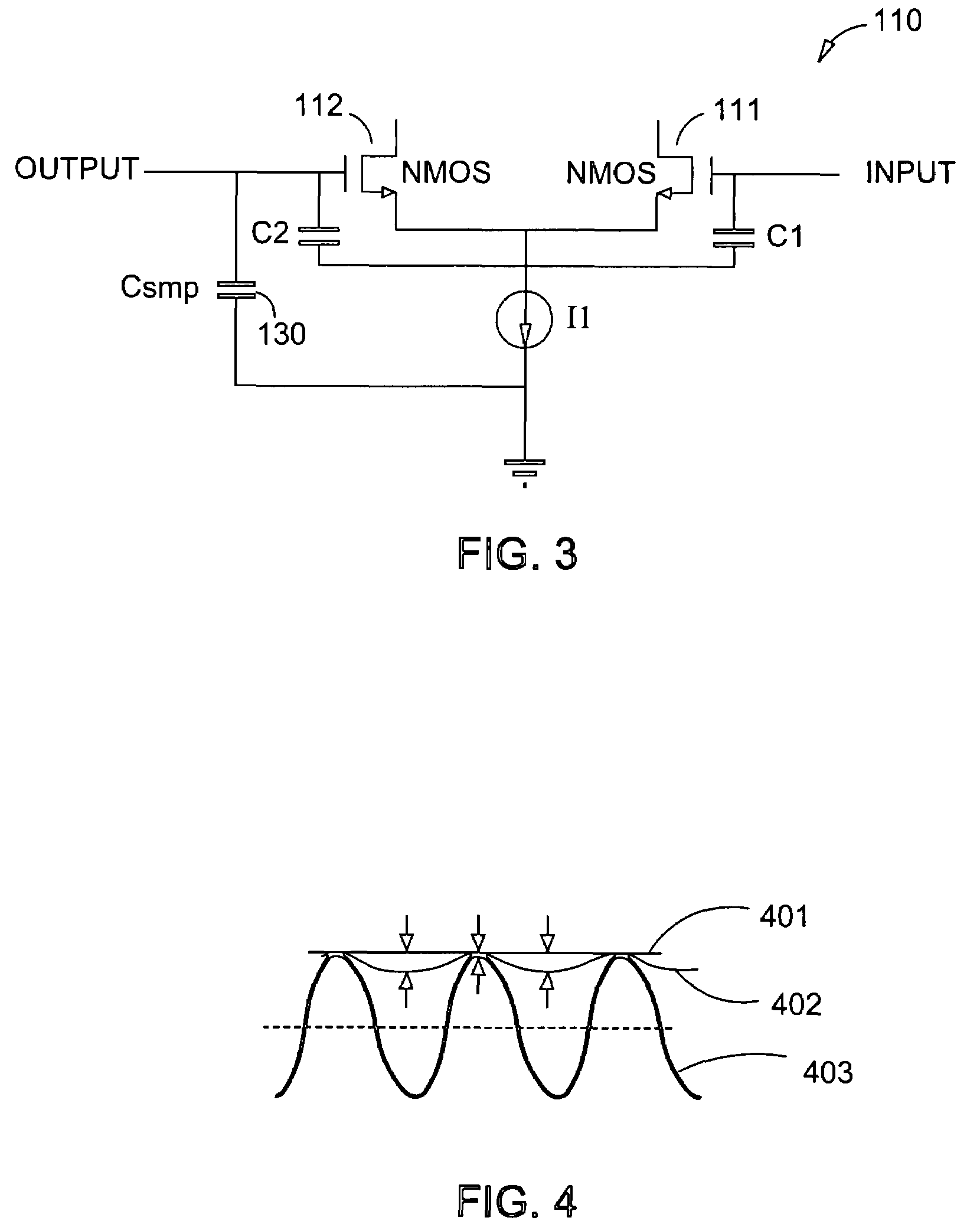Differential peak detector
- Summary
- Abstract
- Description
- Claims
- Application Information
AI Technical Summary
Benefits of technology
Problems solved by technology
Method used
Image
Examples
Embodiment Construction
[0036]FIG. 5 is a block diagram of a differential peak detector according to a preferred embodiment of the invention. Differential peak detector 500 is constructed from three fundamental components: differential amplifier 511, differential amplifier 521, and transconductor amplifier 531. Differential amplifier 511 is constructed to differentially amplify an input signal and output a common mode output whose common mode level is substantially the same as a common mode voltage. Differential amplifier 521 is constructed to output a difference between the common mode output of differential amplifier 511 and a feedback from the output signal across sampling capacitor 535. Transconductor amplifier 531 is constructed to control charging of sampling capacitor 535 based on the output of differential amplifier 521. More detailed explanations are provided hereinbelow.
[0037]Differential amplifier 511 forms stage 510 of differential peak detector 500, along with MUX 512 and logic control circuit...
PUM
 Login to View More
Login to View More Abstract
Description
Claims
Application Information
 Login to View More
Login to View More - R&D
- Intellectual Property
- Life Sciences
- Materials
- Tech Scout
- Unparalleled Data Quality
- Higher Quality Content
- 60% Fewer Hallucinations
Browse by: Latest US Patents, China's latest patents, Technical Efficacy Thesaurus, Application Domain, Technology Topic, Popular Technical Reports.
© 2025 PatSnap. All rights reserved.Legal|Privacy policy|Modern Slavery Act Transparency Statement|Sitemap|About US| Contact US: help@patsnap.com



